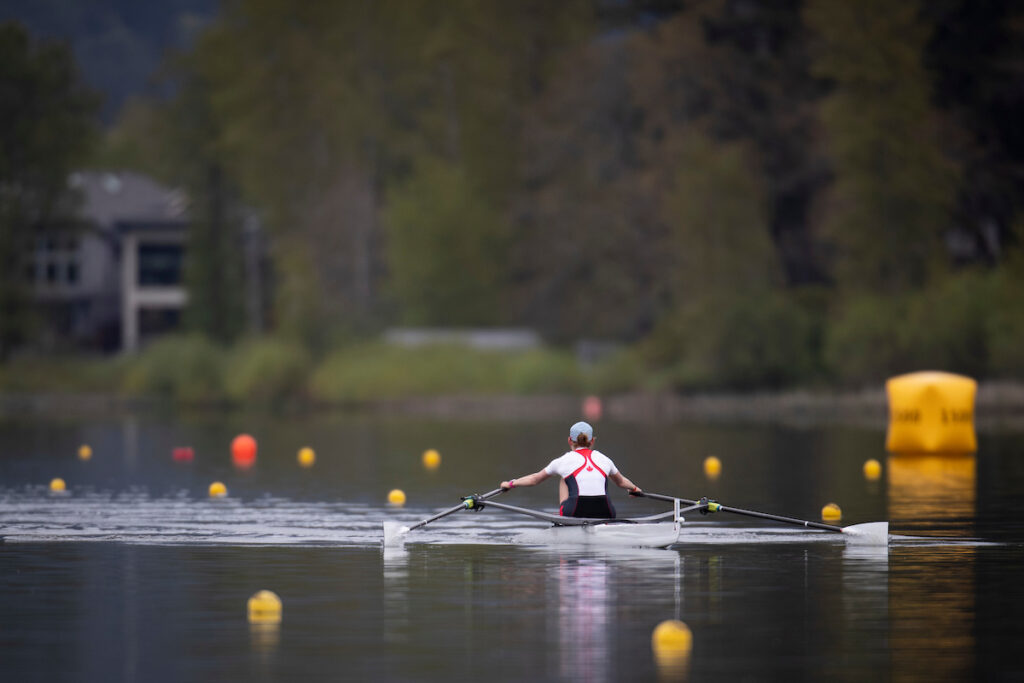
“It’s like rowing in a painting,” says four-time Canadian Olympic rower and silver medalist Will Crothers, oar in hand, overlooking the waters of Quamichan Lake, just a few kilometres northeast of Duncan in Cowichan Valley.
“It’s an amazing experience to train here… the sky, the clouds… it’s always so different. It’s always a sight to behold.”
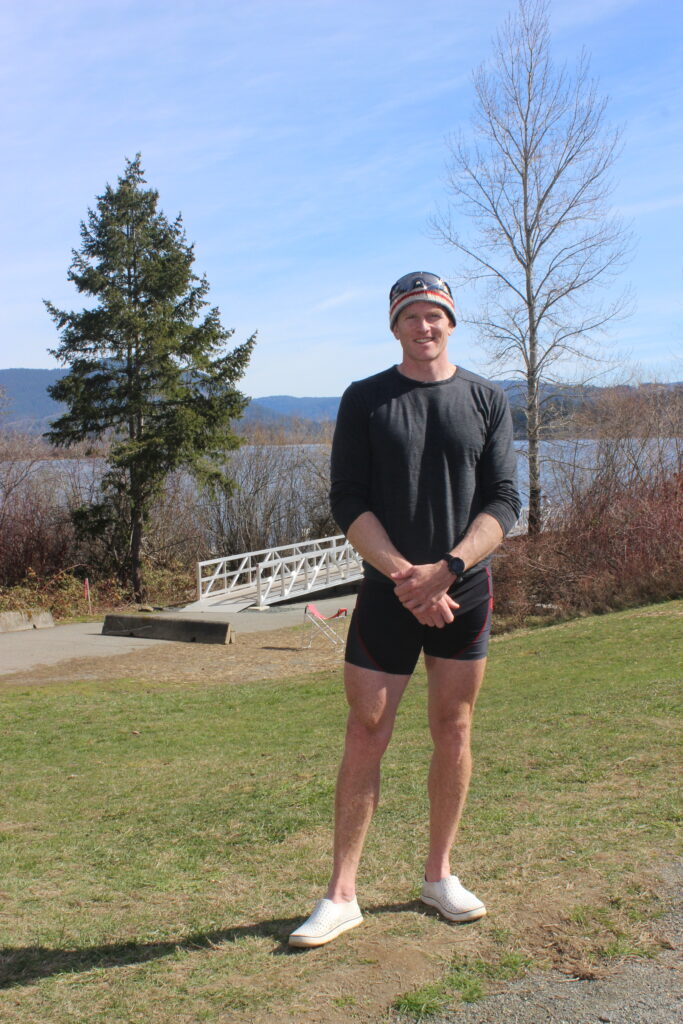
Will is a 35-year-old elite athlete, originally from Kingston, Ontario, who has been rowing internationally since the age of 14. In the spring of 2022, Will, alongside his fellow Rowing Canada Aviron’s (RCA) national teammates and coaches relocated from their previous training centre at Elk Lake in Saanich, just north of Victoria.
Strategic decision
“It’s been interesting to move away from Victoria to a place that is slower in pace, closer to nature with less traffic and a very welcoming community,” Will says. “I love how often we get good water here. The conditions are really consistent, the people are so considerate and supportive of our goals. It gives such a nice space for us to be in a different community where it’s so easy to be a 24/7 athlete.”
Will is one of 35-45 athletes (varying depending on the time of year) that have moved to the area to train full-time. The new location is ideal for nurturing “round-the-clock elite athletes” – critical in an endurance sport like rowing – where minimizing distractions and decision-making stresses are key to energy conservation and focus.
“This was a great strategic decision to train at Quamichan Lake,” says Maksym Kepskyv, the men’s sweep coach and a former competitive rower. Maksym himself moved to Duncan after working with the University of British Columbia in mid-January 2021 and believes living in a smaller, localized community allows everyone to focus on what needs to be done – individually and as a team.
The right environment
Quamichan Lake and the surrounding area offer everything that the athletes need – from access to healthy local foods and a supportive community to a body of water that is far less busy and more conducive to training in race-like conditions. But there was one small caveat that needed to be resolved.
“Rowing Canada Aviron did a lot of research to see what was needed to best support the centralization of high-performance athletes here; where they could come together as a team and have the opportunity to push each other,” says Susanne Wereley, a retired rowing Olympian and gold medalist who now works as Rowing Canada Aviron’s Campaign Coordinator.
Their research culminated, in part, with a large infrastructure project supported in part by a strategic investment by Island Coastal Economic Trust. The initiative was to build environmentally sustainable, fully accessible pathways, ramps, and docks onto Quamichan Lake to facilitate boat entry for the athletes, while also encouraging the growth of the sport more broadly in the community. The ease of access to the water is an important factor in allowing safe entry for everyone, and for the rowers specifically allowing them to train more effectively once on the water.
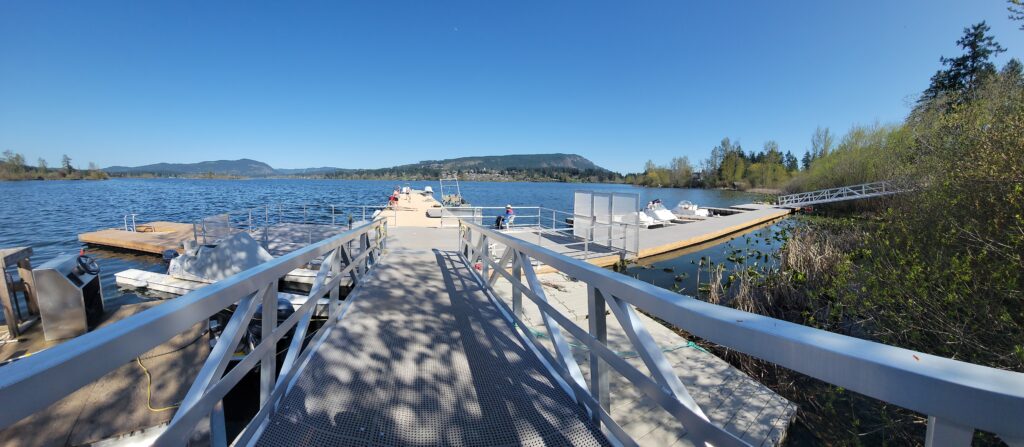
A game-changer
“One of the reasons this lake is the place for RCA to make its new home is because of the access to a new buoyed course,” Susanne says, referring to the two-kilometer, six laned, buoyed course on the lake, which is something they never had at their other training centre. “This is a complete game changer.”
Both Carol Love, the women’s sweep coach and former Olympic rowing medallist, and Dane Lawson who also works with the women’s sweep group, echo Susanne’s comments.
“There are not many courses in Canada like this,” Carol says. She has moved out temporarily from Toronto to train the women through to the end of the 2024 Paris Olympics. “There’s a real opportunity with this new buoyed course, which is a great complement to training on Shawnigan Lake, and in an environment with such a healthy lifestyle.”
Dane, who was the first trainer to move out to Cowichan from Ontario with his girlfriend in October 2020, says they plan to stay permanently. He’s also been inspired to watch the project’s development from inception.
World-class facility
“I’ve seen it go from a fenced-off area with a handful of boats to the beginnings of a world-class facility it is today, with a racecourse and docks that are up to the standard of professional excellence,” he says. “It’s so nice to have this infrastructure in place to allow us to train optimally on the water and in a community that is as spectacular as it is supportive. I look forward to seeing the vision for a proper shell house and athlete hub unfold.”
Initially, the team only trained at Elk Lake, but now Quamichan Lake’s proximity to Elk Lake and Shawnigan Lake is a bonus for the athletes and coaches as they can vary their training sessions across different waters when needed.
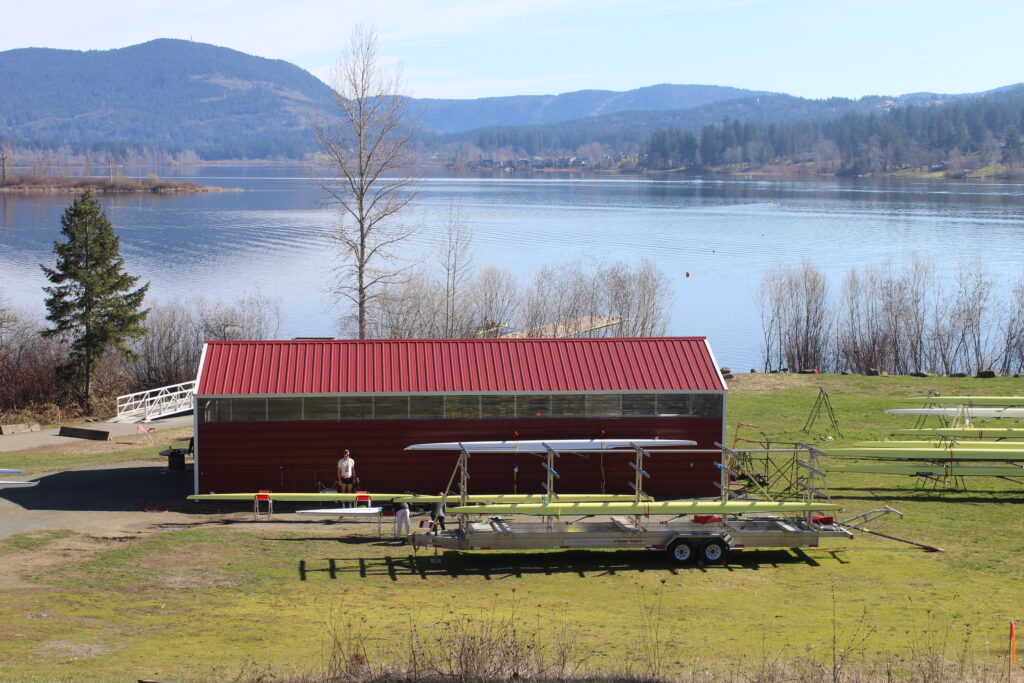
On average, athletes on the national rowing team, including Will, train up to six hours a day. They’re on the water by 8 am, rowing for a few hours followed by an afternoon session of running or hiking on the nearby trails or weight training at the Indoor Training Centre, the former Marigold Nursery site. Having all the athletes and coaches live in the same community is essential to building a cohesive team – one where trainers can optimize their athletes’ chances of success on the international stage, especially as the next summer Olympics approach.
“In this space, the athletes can really share and reflect on their own development daily,” Maksym says. “There’s a level of intimacy that is fostered through the conversations and growth that happens when athletes live together.”
Aside from the benefits of living near one another, there are valuable practical benefits to living within a community like North Cowichan.
“We’re not sitting in traffic to get to training sessions, we have continual access to healthy foods from the local farmers markets and at surrounding local businesses. I can even see the race start line from my house,” Maksym jokes. “This training course has buoyed lanes and that’s what we need to practice for international racing. We are also 20 minutes away from Shawnigan Lake, which provides us with great access to long-distance training when we need it.”
Venue for 2022 National Championships
With the new infrastructure in place, Rowing Canada Aviron were able to hold their first ever National Championships on Quamichan Lake in November 2022.
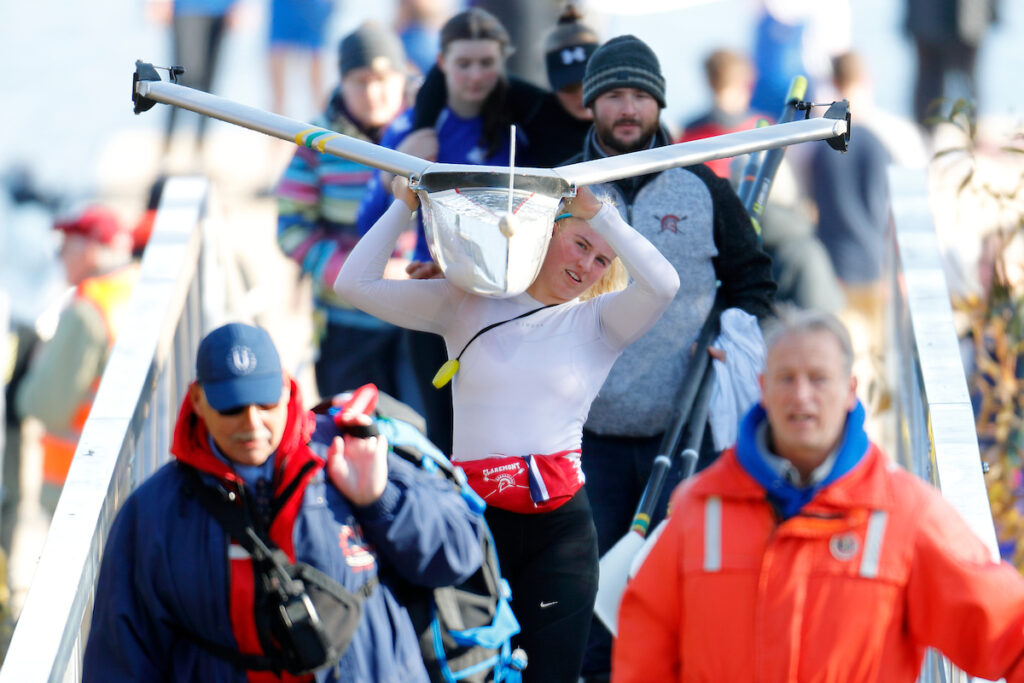
“The competition had a real community focus, and we had such great reception from everyone around,” says Maksym. “People volunteered, some neighbours who have their houses along the course pulled up their lawn chairs, and brought drinks out to watch from their seats along the water.”
For athletes like Olympic gold medallist and women’s open weight team member Sydney Payne, originally from Toronto, holding Nationals at Quamichan Lake was also meaningful on a personal level.
“It has been such a great transition for me to live closer to my extended family,” she says, referring to her grandparents who live in Comox. “Having my family out at Nationals was so wonderful for me. I also really appreciated the local support. It felt so good.”
Community Support
The team’s appreciation of the local community has been mutually shared, particularly by the municipal council and local businesses in the area.
“I speak on behalf of our entire municipality when I say we are very excited to have Rowing Canada Aviron’s National Training Centre right here on Quamichan Lake,” says North Cowichan Mayor Rob Douglas. “There is growing pride in being the hometown for world-class athletes. We cheered them on in 2021 during the Tokyo Summer Games, and we will be doing the same next year when the Canadian National Rowing teams are competing in Paris.”
From an economic perspective, the benefits of having Rowing Canada Aviron in the Cowichan Valley are also tremendous.
“There is $13 million in projected capital investment, an estimated $4 million in annual salaries and program expenses, plus the local jobs that will support the National Training Centre,” says Mayor Douglas. “In addition, the National Training Centre supports sports tourism with new infrastructure and activities on Quamichan Lake, including the six-lane buoyed course, the hosting of local and regional rowing and paddling events, and national training camps. Rowing Canada Aviron’s presence also strengthens partnerships with local groups, including Maple Bay Rowing Club. These partnerships, and having rowers in our community, will inspire the next generations of new, local athletes and future Olympians who will want to participate in rowing.”
Among those local groups benefitting are small business owners like Sandi Gibson, who runs Gibby’s Café and is a proud Duncanite.
“The opportunities of having the team here are endless,” she says. “From a business standpoint, they are creating a consistent financial gain in a very precarious time. And to the community, the benefits are endless. Some athletes rent in the community, shop, go to markets and other outings… As most have come from off the island, their families come to visit, stay at the hotels, eat in our restaurants. And of course, the regattas bring in huge crowds from all over. Last, but not least, they are something we can brag about. When people come into the café and see how busy it is, I can say, ‘they’re our hard-working National rowing team’! They are a definite financial safety net for us, but they are also truly loved!”
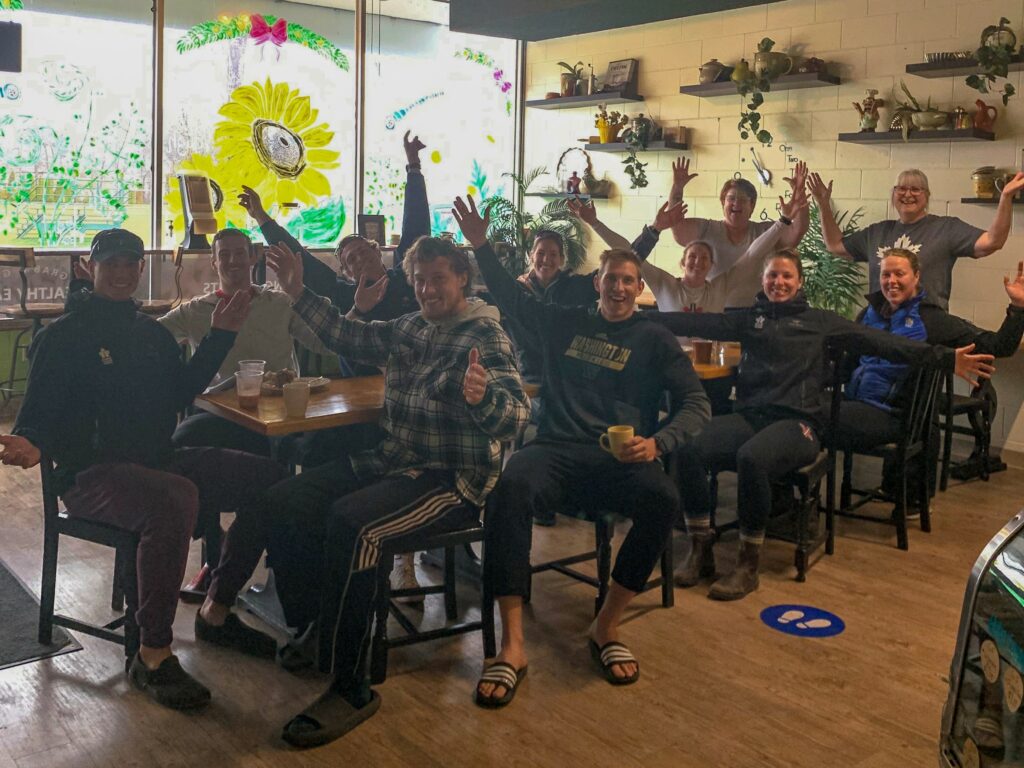
As Susanne explains, it’s been a two-way street of appreciation between the athletes and the community.
“We’re continually looking at more ways to foster community integration and so far, the reception has been overwhelmingly positive. It’s important that the community feels invested and some ownership over the rowers’ successes.”
Encouraging Indigenous Athletes
A key part of bringing the national team to Quamichan Lake has also been to find ways of encouraging new athletes into the sport and particularly local Indigenous youth for whom paddling has traditionally and culturally been highly valued.
“There are a lot of Indigenous people in the community, and I think it’ll be motivational for our youth to see how hard these athletes are training and what it takes to be an Olympian,” says Dana Thorne, Rowing Canada Aviron Board member and a member of the Cowichan Tribes.
Some local schools in the area, including Queen of Angles in Duncan, have brought kids out to row with Maple Bay Rowing Club, which Dana says is important in providing “a visual access point” for Indigenous youth.
“The values of paddling reflect such a deep part of Indigenous values – respect for the environment, your canoe, and the water,” she says. “But it’s also about being in sync with one another. When you’re sitting in a war canoe, which holds 11 people plus the skipper, you need to take the composition of everyone and be able to balance the canoe. Paddling, like sports in general, pushes you to know yourself, to be disciplined, and to learn how to train on your own. Training as a team allows you to focus on a common goal, but you need to be comfortable with where you’re at compared to everyone else. It’s important to understand that we all have our unique skills and, together, we make a whole.”
Benefits for Everyone
Rowing Canada Aviron’s investment in North Cowichan also reflects a commitment by council to increase attention on water quality issues at Quamichan Lake.
“Improved access to the lake will benefit everyone,” says Mayor Douglas, “especially local residents, who will be able to better enjoy the lakeside parks, and to paddle and kayak. Rowing Canada Aviron is a tremendous asset to our region, and we couldn’t be happier to have them here in North Cowichan.”
A United Mechanism
Making a “whole” has been at the heart of the Rowing Canada Aviron’s vision for relocation from the start.
“Having the training centre based here really reflects on how well this place serves as a united mechanism,” says Maksym. “Rowing is not just a physical place. It’s also about allowing for athlete retention, building the integrity of working as a group, and creating a legacy of success for generations to come. Really, it’s about creating a culture where inspiration comes from.”
Sounds as inspiring as rowing in a painting.
***
Island Coastal Economic Trust is honoured to have been working in close partnership with Rowing Canada Aviron on the docks and shoreline phase of the project valued at over $865,000. The Trust contributed $220,000 to the overall budget.